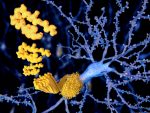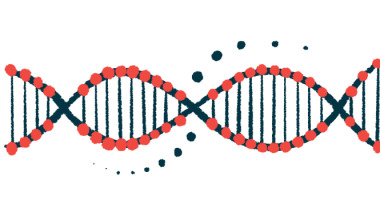Parkinson’s, specific cancers share genetic risk factors: Study
Associations among genes were found between skin, prostate, and breast cancers

Researchers have found a genetic association between Parkinson’s disease and melanoma, a type of skin cancer, and prostate cancer. Data also showed that Parkinson’s genetic risk factors are linked to an increased risk of breast cancer and lower risk of ovarian cancer.
“Our results suggest the importance of shared genetic variants between PD [Parkinson’s disease] and some cancers,” the researchers wrote in the study “Investigation of Shared Risk Factors Between Parkinson’s Disease and Cancers,” which was published in Movement Disorders.
The frequency of cancers and neurodegenerative diseases increases with age, although their cellular effects are opposite; in cancers there is an increase in the number of cells, but nerve cell death in neurodegenerative diseases.
Epidemiological studies tend to indicate that people with Parkinson’s have a reduced risk for cancer, in general, and cancer patients have a lower risk for Parkinson’s.
This is mostly explained by the reduced rate of smoking-related cancers, such as lung, colorectal, and bladder, due to a low prevalence of smoking among Parkinson’s patients.
Several studies, though, have reported an increased risk for specific types of cancer, such as melanoma, breast, prostate, and brain with Parkinson’s.
“Specific genes involved in familial forms of PD (SNCA, Parkin, LRRK2) have been implicated in biological mechanisms associated with breast, prostate, and thyroid cancers,” the researchers wrote.
While the mechanisms underlying this complex association remain poorly understood, evidence suggests the existence of pleiotropic genetic factors. Pleiotropic genes are those that influence two or more seemingly unrelated traits.
An international team of researchers analyzed genetic data from two datasets of Parkinson’s genome-wide association studies (GWAS), including data from more than 40,000 patients and 450,000 controls to identify common genetic risk factors between Parkinson’s and cancer, and better understand their genetic association. GWAS for specific cancers, including melanoma, breast, prostate, lung, ovarian cancer, each involving between 36,000 and 229,000 people, were also analyzed. GWAS enable researchers to search all genes in a person’s cells for small variations that occur more frequently in those with a particular disease. Scientists use these data to pinpoint genes that may contribute to the risk of developing that disorder.
Associations between Parkinson’s, cancers analyzed
The analysis identified a significant genetic association between Parkinson’s and melanoma and prostate cancer for each Parkinson’s dataset. A link with breast cancer was also detected, but failed to reach statistical significance. For ovarian, lung, and thyroid cancers, the results were variable between both datasets and not conclusive.
The polygenic risk score (PRS) for Parkinson’s, or the sum of several genetic variants that contribute to the disease, was significantly linked to a higher risk for breast cancer. Moreover, the Parkinson’s PRS was significantly associated with a lower risk of ovarian cancer, and vice versa, meaning the ovarian cancer PRS was also linked to a lower risk of Parkinson’s.
The PRS for Parkinson’s, breast cancer, and ovarian cancer shared a common region in chromosome 17, with four genetic variants within three genes — NSF, MAPT, and CRHR1.
The inverse association between Parkinson’s and ovarian cancer was mainly driven by a variant, called rs183211, in the NSF gene, which encodes for a protein important for protein transport inside cells, and for nerve cell communication. The variants in this region were also associated with a higher risk of breast cancer.
“These results are in favor of a common haplotype associated with the three diseases,” the researchers wrote. A haplotype is a group of genetic variants in a given chromosome that tend to be inherited together.
Also, five Parkinson’s PRS variants in other chromosomes were linked to a higher risk of breast cancer and two variants of the breast cancer PRS were associated with a higher risk of Parkinson’s.
“Sex-stratified analyses did not show major differences between men and women in the association of the PRS for both ovarian cancer and breast cancer with PD,” the researchers wrote, suggesting “the importance of shared genetic variants between PD and some cancers,” that favor “a contribution of pleiotropic genes” to these associations.
More research on the variant, gene, or molecular pathway level may help understand the shared biological mechanisms between Parkinson’s and cancer, they said.
“It would also be interesting to explore additional environmental factors that could interact with pleiotropic genes associated with both PD and cancer,” the researchers wrote. “Evidence of pleiotropy between PD and cancer will improve our understanding of the [causes] of these diseases and will provide insights into their underlying biology.”







